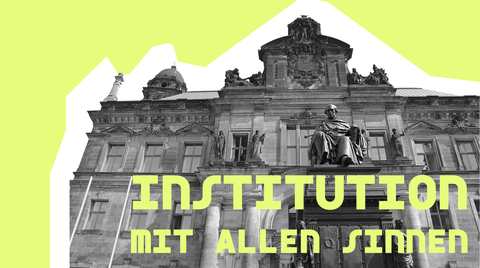Oct 24, 2022
#58 Institutions with all senses
Of course, excursions to institutions such as the state parliament or local court and visits to public institutions in general are part of both school and extracurricular political education. It is certainly worth going beyond a frontally organized tour, in which the participants take on a more passive role. There are already numerous offers in which the participants of learning opportunities at institutions are involved in an exploration of the institution and can actively involve the people who work there.
Our idea today is not particularly new and is just a small addition to how such explorations can be designed. As the title of today's idea suggests, it is a physical and sensory exploration of the institution in addition to a substantive survey. We have looked beyond the boundaries of political education and discovered that (public) spaces can also be approached physically. This is common in site-specific theater, for example, and can be translated into numerous theater pedagogical approaches. It is not about a theater performance on a stage. Rather, research methods of site-specific theater can possibly complement educational programs at institutions.
In addition to researching the content of institutions such as a parliament or a court, they can also be literally explored as places themselves. For example, the following exploratory tasks are exciting for a half-hour observation:
Look around. What does the place look like, what does the place you are in feel like? Look around and find a place (a corner, the stairs, the entrance - anything is possible) where you will now spend half an hour. What does it smell like here? What does the place sound like when you close your eyes for a moment? What atmosphere do you think prevails here? Write down or record your findings. Document your "findings" with a photo. How many and which people actually pass by here? How do they move? Do you always recognize typical movements? Try to imitate them. Are there rules in this place that everyone seems to follow? Which ones can you observe? Do the rules apply equally to everyone? Are there perhaps even movements or sequences that seem almost rehearsed? How does the building appear to you from the outside - and from the inside?
The collected results of such an exploration can be wonderfully combined with the results of content-related research on the location. After all, they often have something to do with each other.

